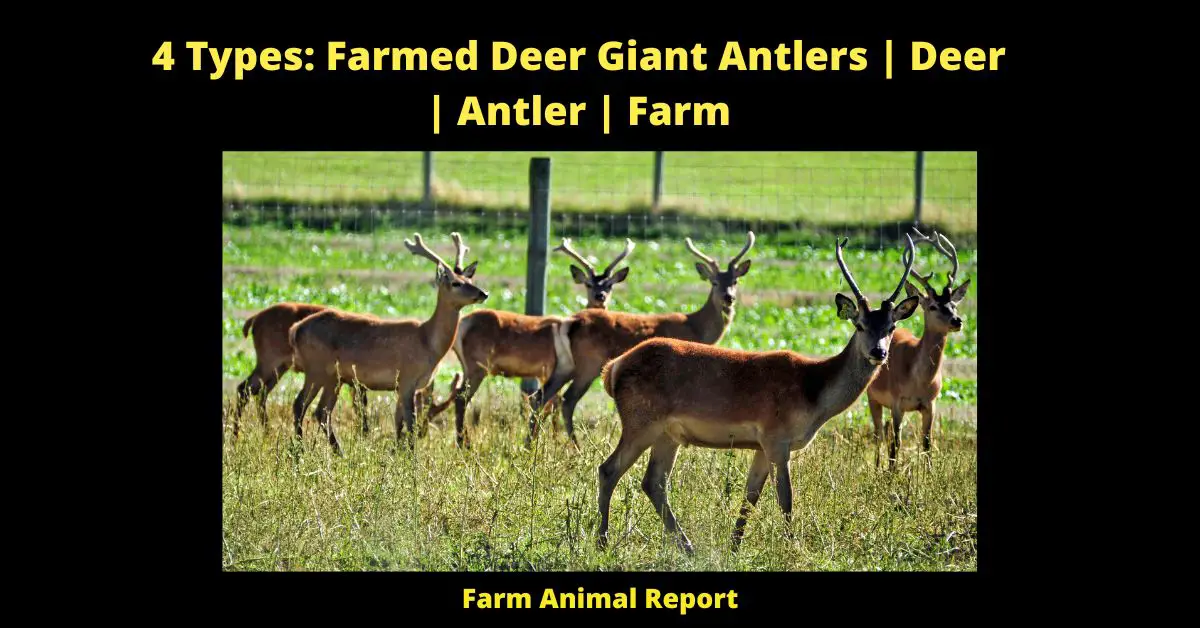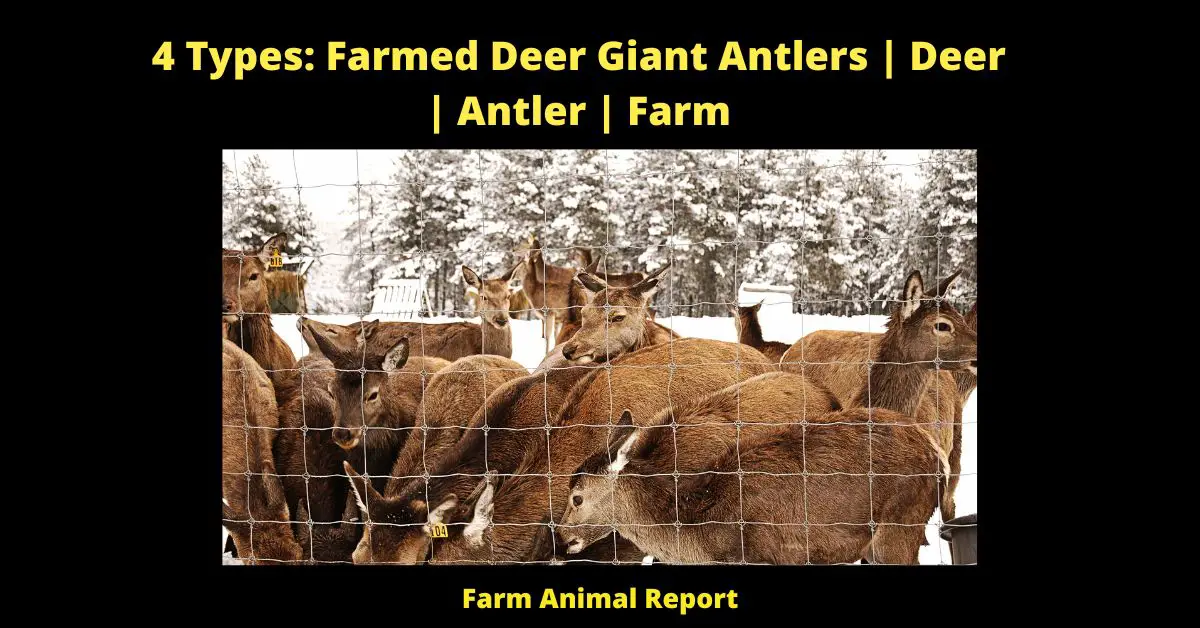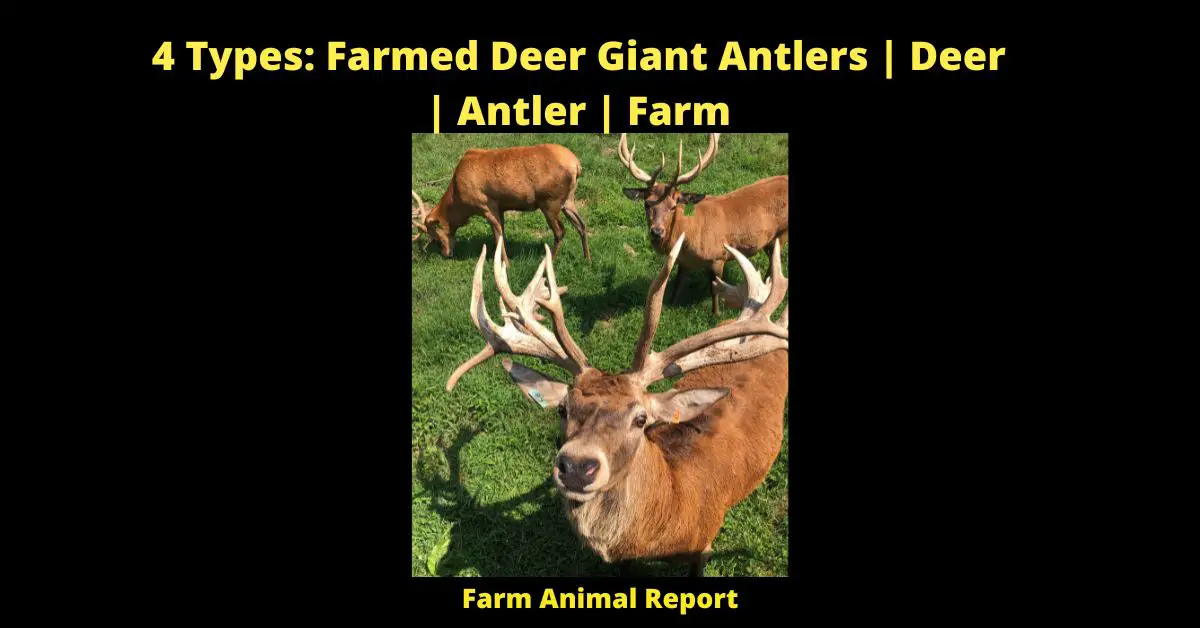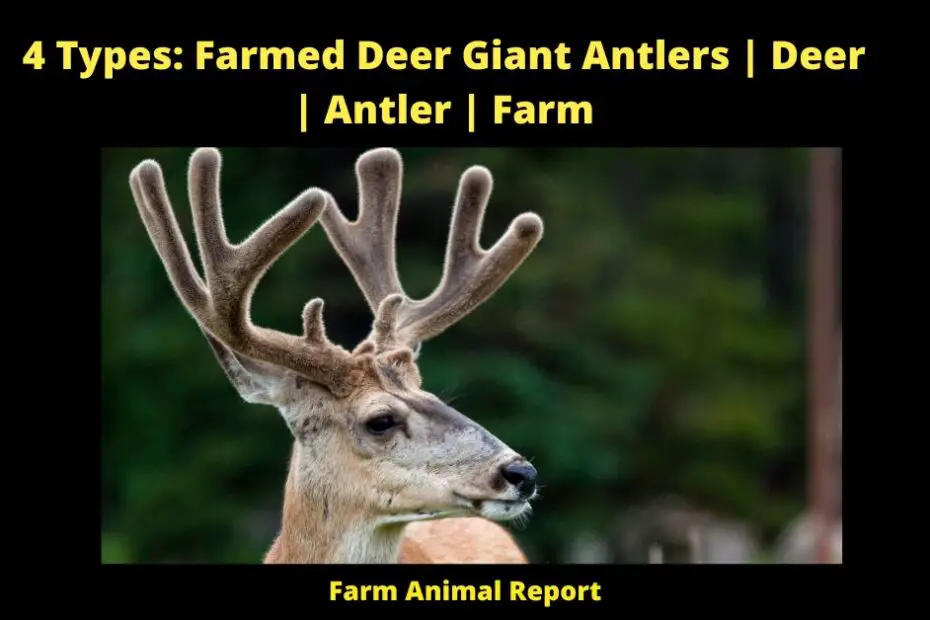Did you know that deer antler are one of the most renewable resources on the planet? Deer antler farming is a burgeoning industry, and it’s easy to see why. Deer antlers are used in traditional medicines all over the world, and they have many other uses as well. In this blog post, we will discuss all deer antler farming and how it is changing the agricultural landscape. Stay tuned for more!
Deer farming has been around for centuries. Early settlers in North America hunted deer for their meat and hides. The practice of deer farming began in Europe in the eighteenth century as a way to preserve the game population. In the United States, deer farming began in the early 1900s. Today, deer farmers raise deer for their meat, antlers, and velvet. Antler velvet is used in traditional Chinese medicine.
The vast majority of deer farms in the United States are located in the Southeast. Florida, Georgia, Alabama, Mississippi, Louisiana, and South Carolina are home to most of the commercial deer farms in the country. These states have a climate that is conducive to the year-round growth of native grasses, which deer graze on. In addition, these states have large tracts of land that are suitable for farming operations.

Most of the deer raised on commercial farms are white-tailed deer. However, there are also farms that raise mule deer, elk, red deer, and fallow deer. The yield from a typical farm consists of 50% bucks (male deer), 30% does (female deer), and 20% fawns (deer calves). Bucks are raised for their meat and antlers. Does are raised for their meat. Fawns are generally sold to other farmers or hunters.
Deer farming is a highly regulated industry. Farmers must obtain a permit from the state wildlife agency before they can operate a farm. In addition, farmers must comply with strict biosecurity protocols to prevent the spread of disease among their herds. These measures protect both the health of the animals and the integrity of wild populations. High Fence keeps Big Bucks as captive deer. This allows controlled Breeding of Body Size, Antler size, and Biggest Racks in Farmed Deer Breeds
Despite its regulatory hurdles, deer farming is a thriving industry in the United States. There are approximately 2000 commercial deer farms in operation today, with an estimated value of $2 billion per year. These farms provide employment for thousands of Americans and generate economic activity in rural communities across the country.
Farmed Deer Giant Antlers
Deer farming is a multimillion-dollar industry in New Zealand. The country has the world’s most advanced deer farming industry, which originated in the late 1970s. There are several reasons for this.
Firstly, deer are popular game animals for sports hunters, (deer Hunters) looking for Trophy Animals. who prize their giant antlers. Secondly, deer are used in traditional Chinese medicine. Thirdly, deer are bred as breeding stock to replenish wild deer populations. And finally, deer farming is an important part of the country’s agricultural economy.
Check Out Amazons Educational Books on Whitetail Deer
Hunting for Sport / Trophies
Giant antlered deer have been a popular game animal since the days of medieval royalty when only the wealthy could afford to hunt them. Today, trophy farms raise deer with giant antlers as a way to preserve this tradition and provide opportunities for hunters to bag a record-breaking buck.
The process begins by selecting bucks with the desired traits and breeding them with does that also possess these traits. The resulting offspring are then raised on specially designed diets and given plenty of space to roam in order to encourage the growth of large antlers. By following these practices, trophy farms are able to produce deer with antlers that can span up to six feet in width.

While some people criticize this industry for its impact on the environment, there is no denying that trophy farms play an important role in preserving this time-honored tradition. Big Antlers raised for optimal antler growth are raised on captive deer farms. High-Fence Hunts in late summer are common. Resources are the North American Deer Farmers Association.
Medicinal use of Deer Parts\ Chinese Medicine
Many people are familiar with deer farms where animals are raised for their meat or for hunting. However, did you know that there are also deer farms that specialize in growing giant antlers? These antlers can be harvested and used for a variety of purposes, including the making of traditional Chinese medicine. The Chinese have used deer antler Velvet for centuries to treat a variety of ailments, including joint pain and fatigue.
In recent years, the popularity of velvet as a dietary supplement has grown among athletes and bodybuilders who believe that it can improve strength and stamina. While there is no scientific evidence to support these claims, the demand for velvet-derived products continues to grow. As a result, more and more deer farms are being established to meet this demand.
On these farms, the deer are kept in enclosed areas and given a diet that is rich in minerals and vitamins. This diet helps to promote the growth of large antlers. Once the antlers have reached a certain size, they are harvested and either sold fresh or processed into powder or extract form. While the farming of deer for their antlers is not without controversy, there is no denying that it has become a big business in recent years.
Deer velvet is a type of animal tissue that grows on the antlers of deer. It is used in traditional Chinese medicine and is purported to have a number of health benefits. Farms in New Zealand that raise deer for their velvet typically use one of two methods: captive breeding or wild harvesting. In captive breeding, deer are confined to fenced enclosures where they are closely monitored and cared for by farmers.
This method allows farmers to control the size and shape of the deer’s antlers. Wild harvesting, on the other hand, involves tracking down and capturing wild deer. Although this method is more labor-intensive, it provides farmers with a greater variety of antler shapes and sizes. Either way, New Zealand’s deer velvet farms are able to produce high-quality products that are prized by consumers around the world.
Breeding stock \ Deer Farms Certified Healthy Stock
In order for a farm to be deer breeding stock, the farm must first be certified healthy. To achieve this, the farm must follow certain guidelines set forth by the government.
- First, the farm must have a clean bill of health from a veterinarian.
- Second, the farm must have a strong fence to keep out predators.
- Third, the farm must provide ample food and water for the deer.
- fourth, the farm must provide shelter from the elements.
By following these guidelines, farms can ensure that their deer breeding stock is healthy and productive.
The white-tailed deer is a graceful creature that has been revered by humans for centuries. Native Americans revered the deer for its beauty and grace, and the animal has been a popular subject of art and literature throughout history. Today, deer continue to be a source of intrigue and wonder, and many people enjoy hunting them for sport.
However, deer are also farm animals, and many deer farms in the United States are required to have certified healthy deer stock for their farms. This certification is important because it helps to ensure that the deer on these farms are free of diseases that could potentially be passed on to humans. In addition, certified healthy deer stock helps to ensure that the meat from these animals is safe for human consumption.
As a result, certification is an important part of maintaining a healthy deer population in the United States.
In the United States, Deer Farms are big business. In order to ensure that their stock is healthy, the farms are required to have certified healthy deer. This certification comes from the State Department of Agriculture. The process of the certification includes an inspection of the farm by a veterinarian who looks for signs of disease. If the farm meets all the requirements, it is then certified as a ‘healthy’ deer farm.

This certification is important because it helps to protect the public from diseases that could be transmitted by sick deer. It also ensures that the deer on the farm are healthy and able to produce healthy offspring. As a result, certification is an important part of ensuring that deer farms in the United States are able to operate safely and effectively.
Wild animals \ Replenish Wildlife
There are many reasons why people may choose to farm deer. For some, it is a way to make a living by selling meat or antlers. Others may focus on replenishing wildlife populations. In areas where deer populations have been depleted by hunting or habitat loss, deer farms can provide a source of animals for restocking efforts. In addition, deer farming can help to preserve genetic diversity within a species. By keeping a variety of different strains of deer, farmers can ensure that the gene pool remains healthy and robust. As a result, deer farming can play an important role in conservation efforts.
Wild Deer / Enjoyment
The United States is home to many different kinds of wildlife, including deer. For centuries, deer have been an important part of the ecosystem, providing food for predators and helping to spread seeds and nutrients through their droppings. However, deer populations have declined in recent years due to habitat loss and hunting pressure. In order to replenish wild deer populations, many farmers have turned to raising deer on farms. Deer farming is a sustainable and humane way to provide new deer for Hunting or other purposes. The animals are well cared for and live in natural surroundings, allowing them to flourish. In addition, deer farms help to support local economies by providing jobs and generating revenue. By supporting deer farms, we can help to ensure that wild deer populations remain healthy and robust for years to come.
What are Types of Deer Raised on Deer Farms
There are several types of deer that can be raised on deer farms. The most common type of deer is the white-tailed deer, which is native to North America. Other popular types of deer include the red deer, which is native to Europe, and the sika deer, which is native to Asia. Deer farming is a relatively new industry, and as such, there are still many regulations governing the raising of deer. In general, deer farms must be licensed by the state in which they operate, and they must follow strict guidelines regarding the care and welfare of their animals.
There are four main types of deer that are raised on deer farms: reindeer, elk, mule deer, and white-tailed deer. The most common type of deer farmed is the white-tailed deer, which is native to North America. These animals are typically raised for their meat, which is lean and high in protein. Elk are the second most popular type of deer farmed, and they are also raised for their meat.
Like white-tailed deer, elk are native to North America and they are a good source of lean protein. Reindeer are the third most popular type of deer farmed, and they are native to Europe and Asia. Reindeer are typically raised for their antlers, which are used in traditional Chinese medicine. Finally, mule deer are the least common type of deer farmed. These animals are native to North America and they are typically raised for their hide, which is used to make leather products.
Types of Breeding on Deer Farms
There are two ways that deer breeders go about breeding their deer. The first way is called natural and the second is artificial insemination. With natural, the bucks and does live together and when the doe comes into heat, the buck will mate with her. This usually happens in the fall so that the fawns will be born in the spring. Artificial insemination is when the breeder collects semen from a buck and then inseminates the doe with it.
This can happen at any time of year and allows for more control over which genes are passed on. However, it is more expensive than natural breeding. Natural breeding usually results in higher quality bucks since they are better adapted to their environment. Artificial insemination can be used to produce Bucks with superior genes such as large antlers or high Desire to be around humans.
The Largest Whitetailed Buck on Record is
The Largest Whitetailed Buck on Record is from Central Wisconsin and he weighed in at 213 pounds. He had a score of 240 2/8using the Boone and Crockett system. The rack had 27 points with a main beam length of 27 3/8 inches and a inside spread of 22 1/2 inches. This massive buck was taken down with a bow by Gerald Goyal in September of 2014.
Setting the new world record for the largest whitetail buck isn’t the only impressive thing about this animal, his antlers also make him the new number two all-time typical buck in the Boone and Crockett record book. To give you some perspective, the average live weight of a whitetail deer is between 130-160 pounds, so this guy was nearly twice the size of a normal deer! When it comes to trophy bucks, it doesn’t get much better than this one.
Final Thoughts – Farmed Deer Giant Antlers
The benefits of deer farming are manifold. First, deer are hunted for sport, and large antlers are in high demand for trophy hunters. Second, Chinese medicine values deer antlers for their purported medicinal properties. Third, breeding stock is in high demand for deer farmers wishing to expand their herds. Fourth, culling wild deer populations helps to keep the numbers in check and protect the environment. In conclusion, deer farming is a valuable industry that provides many benefits to society.


